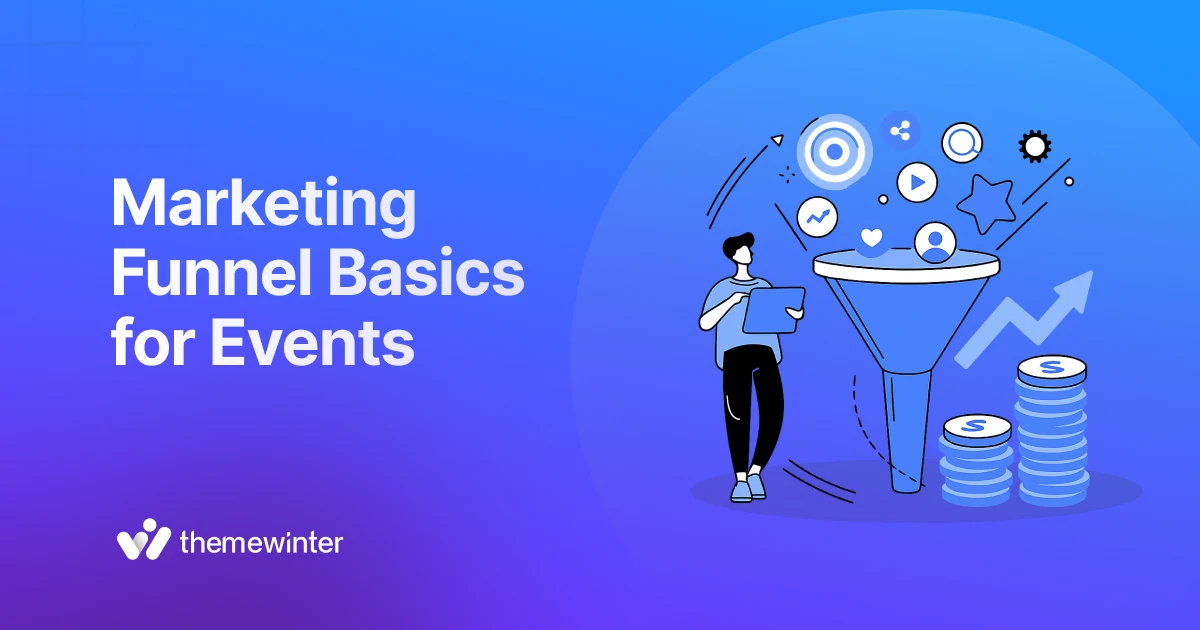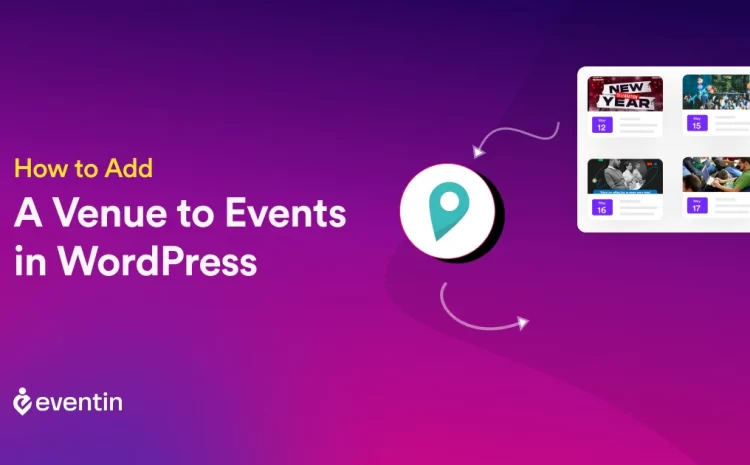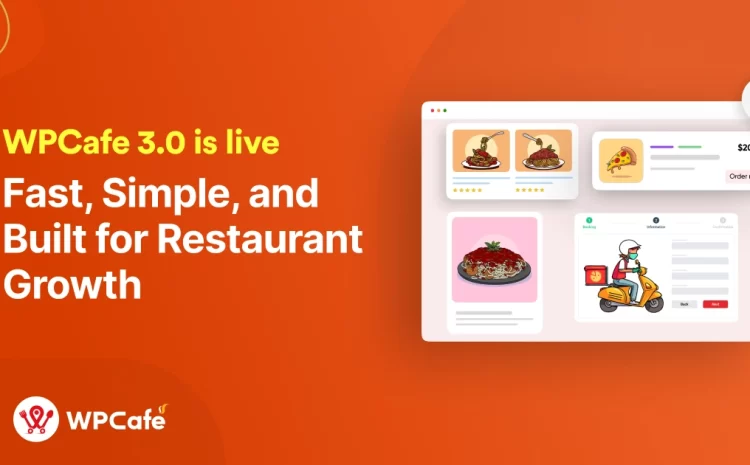4 Easy Steps to Optimize Marketing Funnel with Events

Table of Contents
Getting people to attend your event takes more than a signup form and a few social posts. You need a structured approach that guides them from discovery to registration and beyond.
That’s where marketing funnel basics for events come in.
An event marketing funnel helps you share the right message at the right time, build trust, and move potential attendees toward action.
We know this works because we’ve been building and supporting an event management plugin for WordPress, Eventin, for years.
In this guide, we’ll break down how an event funnel works, how it differs from a standard funnel, and how you can apply it to your next event using WordPress to improve your event marketing strategy.
📌 Quick Overview
This guide helps you understand the marketing funnel basics for events and how to apply them to improve signups and engagement. You’ll learn:
- What an event marketing funnel is and why it matters
- How event funnels differ from standard marketing funnels
- The four key stages of an event funnel with real tactics
- Common mistakes event marketers make and how to avoid them
- How to build and run an event funnel on WordPress using the Eventin plugin
- Extra tips to optimize each stage of your funnel

What is a marketing funnel (and why it matters for events)?
A marketing funnel shows how people move from first hearing about your event to becoming active attendees. It helps you plan what actions to take at every stage from awareness to conversion and beyond.
Understanding the stages of a marketing funnel for events helps you target the right audience, track performance, and make better decisions. Without it, you might waste time promoting your event to people who aren’t ready or lose attendees because of poor follow-up.
For example, someone who just saw a social media post about your event for the first time needs different information than someone who has already read the agenda and is considering whether to register.
Here’s how an event marketing funnel typically works:
- Top of the funnel (awareness): The goal here is to attract attention. This might involve blog posts, ads, or organic social content.
- Middle of the funnel (interest and consideration): Now you’re helping people understand why your event matters to them. You might use speaker spotlights, agenda previews, or testimonials.
- Bottom of the funnel (decision and action): At this point, people are ready to make a choice. You want to remove friction and make it easy to sign up or buy a ticket.
When you apply this funnel mindset to your event marketing strategy, every effort has a purpose. You’ll know which event promotion tactics work best, where people drop off, and how to guide them toward registration.
Event funnel vs standard marketing funnel
A traditional marketing funnel focuses on selling a product or service. The goal is to get a customer to buy. An event marketing funnel, on the other hand, is about driving participation, convincing people to register, attend, and stay involved.
Here’s how the two compare:
| Element | Standard Marketing Funnel | Event Marketing Funnel |
| Goal | Product sale or subscription | Event registration or attendance |
| Timeline | Ongoing or flexible | Fixed dates (event deadline) |
| Content Focus | Product features, long-term value | Schedule, speakers, and early bird incentives |
| Urgency Drivers | Limited-time offers, scarcity | Event date, limited seats, early bird prices |
| Post-conversion | Upsells, retention campaigns | Feedback surveys, replays, and future event promos |
Unlike general marketing funnels, event funnels often include attendance and retention stages. These are crucial because event success depends on real participation, not just sign-ups.
For example, you might attract hundreds of people to your registration page, but only a fraction may show up. A strong event funnel helps you spot and fix where people drop off, whether it’s the sign-up form, ticket checkout, or reminder stage.
Want the full breakdown? Read the complete Event Marketing Funnel Guide
The 4 stages of an event funnel (with tactics that actually work)
Each stage of the event marketing funnel plays a different role. You guide people step by step from learning about your event to becoming loyal attendees. Let’s break it down.
1. Awareness: Let people know your event exists
At this stage, your goal is simple reach the right audience. Use blog posts, social media, email teasers, and short videos to spread the word. You can also collaborate with partners or influencers to get extra visibility.
Tactics:
- Publish blog posts related to your event topic
- Promote your event on social media and event listing sites
- Run targeted ads based on industry or location
- Use SEO-optimized landing pages with keyword-rich titles
2. Interest: Keep potential attendees engaged
Once people know about your event, they’ll want to learn more. This is where you keep their attention with valuable content and clear benefits. Show them what makes your event special: expert speakers, sessions, or networking opportunities.
Tactics:
- Send email teasers to your list with highlights
- Share behind-the-scenes content or speaker interviews
- Provide early-bird pricing or limited-time discounts
- Include social proof like testimonials or past event photos
3. Conversion: Get signups and ticket purchases
At this point, your audience is close to signing up. Don’t let friction or missing information slow them down. Everything they need should be clear, simple, and easy to act on.
Tactics:
- Use strong calls to action like “Register Now” or “Save Your Seat”
- Simplify the registration form by only asking for what’s necessary
- Offer secure, flexible payment options
- Highlight urgency (e.g., “Only 10 spots left”)
4. Retention: Keep attendees coming back
After your event ends, your funnel doesn’t stop. This stage focuses on building relationships. Follow up with thank-you emails, surveys, and recap posts. Ask for feedback to improve your next event.
Tactics:
- Send thank-you emails with follow-up resources
- Share session recordings or presentation slides
- Ask for feedback via surveys
- Promote your next event while interest is still high
6 common funnel mistakes that sabotage your event success
Even with a solid plan, it’s easy to miss key parts of the funnel, especially when timelines are tight. Many event marketers focus heavily on promotions but forget the steps that make those efforts work together.
Here are some common mistakes that can weaken your event marketing, and what to do instead.
- Ignoring early stages: Jumping straight into selling tickets without building awareness first usually leads to low conversion rates. People need time to learn about the event, understand why it matters, and consider if it’s right for them.
- Too many steps/friction in registration: A long or confusing registration process can cause people to drop off. Even small barriers like multiple form fields or unclear pricing can lead to lost signups.
- Not tracking the right KPIs: Without data, you can’t know which part of your funnel needs improvement. Many marketers look only at registration numbers and ignore other indicators.
- Not segmenting their audience: Sending the same message to everyone doesn’t work. A new visitor and a returning attendee have different needs and expectations.
- Lack of automation or follow-up: If you’re managing your funnel manually, it’s easy to miss opportunities. Automation helps you stay consistent and reach people at the right time.
- Failing to follow up after the event: Once the event ends, communication often stops. That’s a missed opportunity to build loyalty and increase the chances of attendees returning.
How to build a WordPress-powered event funnel with Eventin
Now that you understand the stages, let’s put everything into action. Here’s a step-by-step micro-guide on how to create your own event funnel using WordPress and the Eventin plugin.
Create an event with clear value
Start with the basics: what’s your event about, and why should someone attend?
In your WordPress dashboard, go to Eventin > Add New Event and fill in the key details: title, date, speakers, and description.
In Eventin, you can add:
- Speaker profiles
- Multi-day schedules
- Recurring events or one-time sessions
- Event location with Google Maps integration
Want to see how this looks in action? Check this
Set up a landing page
Your event page should act as a mini website focused only on one goal: registration.
Use Eventin’s event landing page layout to show details like schedule, venue, and speakers. Add a simple registration or “Buy Ticket” button above the fold.
For a better experience, include social proof such as testimonials or previous event photos.
Want to see how this looks in action? Check this
Connect WooCommerce for paid tickets
If your event requires payment, enable WooCommerce inside WordPress and link it to Eventin.
This integration helps you sell tickets securely, manage stock, and track orders all in one place.
It also supports coupons and early-bird pricing, helping you convert visitors faster.
Use email automation
Email marketing is one of the best tools to nurture leads and convert event attendees. Use Eventin’s built-in email automation builder to send reminders and updates automatically.
You can schedule welcome emails, payment confirmations, and event-day reminders without manual work.
Want to see how to build automated event emails for attendees in WordPress? Check this video
Track signups and engagement
Finally, track how your funnel performs. Use Eventin’s analytics or connect Google Analytics to see which marketing sources bring the most visitors.
Add UTM parameters to your links and check how many clicks lead to actual ticket purchases.
This data helps you spot drop-offs and improve your next campaign.
Bonus tips to optimize every event funnel stage
Once your event marketing funnel is in place, small changes can make a big difference. Here are a few practical ways to optimize each stage of your funnel and improve your results over time.
- A/B test event titles and pages: Try two versions of your event title or landing page. See which one gets more clicks or registrations. A simple change in headline or button text can help you learn what works best for your audience.
- Retarget cold leads: Not everyone registers the first time they visit your page. Use Facebook Pixel or Google Ads remarketing to reach people who showed interest but didn’t sign up. Remind them with clear offers or updates, like “Last 24 hours to join.”
- Use UTM links to track marketing sources: Add UTM parameters to every campaign link you share on email or social media. This helps you find which event promotion tactics bring the most registrations: blog posts, ads, or emails.
- Embed calendar links: After each event, review your analytics. Check which stage had the biggest drop-off and adjust your next campaign. Over time, this makes your event marketing funnel more predictable and efficient.
FAQs about event marketing funnel basics
How do I know if my event marketing funnel is working?
You’ll know your funnel is working if you see steady growth in key metrics at each stage — such as page visits, email open rates, ticket sales, and event attendance. Tracking tools like Google Analytics, Eventin’s dashboard, or email reports can help you spot where users drop off and what’s converting well.
Can I build an event funnel without paid ads?
Yes. You can build an effective event marketing funnel using organic traffic sources like blog posts, SEO, email lists, and social media. Paid ads can speed up awareness, but content and email are long-term assets that work without an ad budget.
How early should I start my event marketing funnel?
It depends on the event, but starting 6 to 8 weeks in advance is a good rule. For larger conferences or limited-seat events, start even earlier. This gives you time to build awareness, send follow-ups, and optimize for conversions.
Do I need different funnels for free and paid events?
The funnel stages are the same, but tactics may differ. Free events usually need more trust-building to prove value. Paid events often need stronger urgency and clearer ROI. In both cases, tools like Eventin help manage the process inside WordPress.
Can I reuse the same funnel for future events?
Yes, but update key details like dates, speakers, and topics. With Eventin, you can clone past events and reuse email workflows, forms, and layouts — saving time while keeping your funnel active and effective.
Read also: Best WordPress Event Calendar Plugins
Conclusion
A well-planned event marketing funnel gives you more than just a structure; it provides you with a marketing strategy. By understanding each stage and applying the right tactics, you can guide potential attendees from first hearing about your event to showing up and staying engaged.
The key is to focus on the whole journey, not just the final step. If you’re building your funnel on WordPress, having the proper setup helps everything run more smoothly. With the Eventin plugin, you can manage your entire funnel from promotion to follow-up without relying on multiple platforms.
The better your funnel, the better your chances of turning interest into action and making every event more successful than the last.
Try Eventin Today
Start building your full event funnel right inside WordPress — from event pages and ticketing to automation and follow-ups.
Get Started with Eventin
